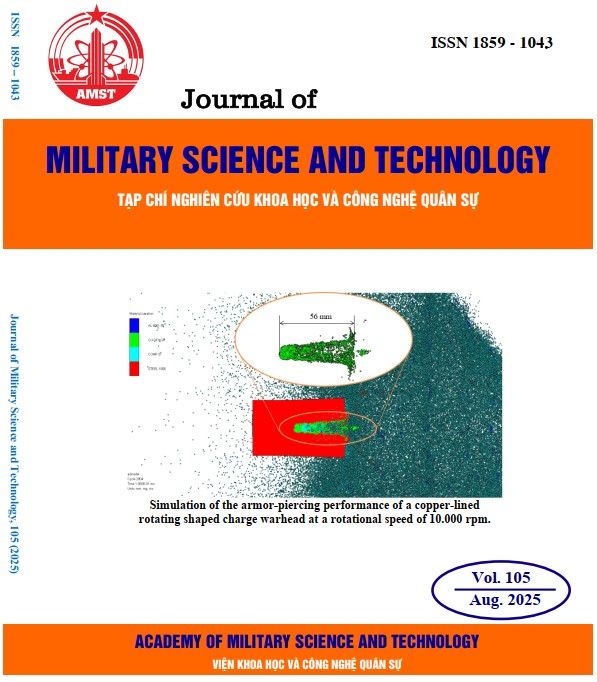An ensemble model with feature selection for nearshore wave forecasting
311 viewsDOI:
https://doi.org/10.54939/1859-1043.j.mst.105.2025.121-129Keywords:
Feature selection; XGBoost; Nearshore wave; Global wave forecast.Abstract
The study proposes an ensemble one-week ahead Wave Forecast of Nearshore Waves (OWFNW) framework for managing shipping and construction in marine work sites. The framework uses XGBoost with feature selection (FS_XGBoost) for forecasting at 5 stations on the Japanese coast. XGBoost-based wave models are developed for each station, transforming global wave data into nearshore wave predictions. Models are trained using four different training sets from the Japan Meteorological Agency (JMA), National Oceanic and Atmospheric Administration (NOAA), European Centre for Medium-Range Weather Forecasts (ECMWF) and Nationwide Ocean Wave information network for Ports and HarbourS (NOWPHAS). The results indicate that selecting features enhances the model's prediction accuracy and refining prediction errors. The methodology can be applied to other nearshore seas where global wave forecast data is available.
References
[1]. Z. &. D. A. Wei, "A convolutional neural network based model to predict nearshore waves and hydrodynamics," Coastal Engineering, vol. 171, (2022).
[2]. P. P. J. C. M. D. R. & M. S. Bento, "Ocean wave power forecasting using convolutional neural networks," IET Renewable Power Generation, vol. 15, no. 14, pp. 3341-3353, (2021). DOI: https://doi.org/10.1049/rpg2.12258
[3]. S. H. J. L. Y. L. G. B. F. &. B. Z. Gao, "A forecasting model for wave heights based on a long short-term memory neural network", Acta Oceanologica Sinica, vol. 40, no. 1, pp. 62-69, (2021). DOI: https://doi.org/10.1007/s13131-020-1680-3
[4]. F. C. & F. L. Minuzzi, "A deep learning approach to predict significant wave height using long short-term memory", Ocean Modelling, vol. 181, (2023).
[5]. S. X. N. & D. S. Fan, "A novel model to predict significant wave height based on long short-term memory network," Ocean Engineering, vol. 205, (2020). DOI: https://doi.org/10.1016/j.oceaneng.2020.107298
[6]. S. A. S. G. N. G. F. &. S. J. J. Emmanouil, "Statistical models for improving significant wave height predictions in offshore operations," Ocean Engineering, vol. 206, (2020). DOI: https://doi.org/10.1016/j.oceaneng.2020.107249
[7]. D. S. D. P. S. R. H. S. &. S. A. Adytia, "A Deep Learning Approach for Wave Forecasting Based on a Spatially Correlated Wind Feature, with a Case Study in the Java Sea, Indonesia", Fluids, vol. 7, no. 1, (2022). DOI: https://doi.org/10.3390/fluids7010039
[8]. X. R. H. S. J. T. X. L. a. J. L. Q. Lin, "A Hybrid Feature Selection Method Based on Imbalanced Learning for Wave Prediction," in IEEE International Symposium on Parallel and Distributed Processing with Applications (ISPA), Kaifeng, China, (2024).
[9]. S. T. T. H. T. M. &. M. H. Kim, "A framework for transformation to nearshore wave from global wave data," Ocean Engineering, vol. 221, (2021).
[10]. N. K. S. R. & A. M. A. Kumar, "Ocean wave height prediction using ensemble of extreme learning machine," Neurocomputing, vol. 277, pp. 12-20, (2018). DOI: https://doi.org/10.1016/j.neucom.2017.03.092
[11]. J. &. X. X. Chen, "Ensemble learning based approach for the prediction of monthly significant wave heights," Renewable Energy, (2025).
[12]. F. Z. Y. C. B. &. J. S. C. O’Donncha, "Ensemble model aggregation using a computationally lightweight machine-learning model to forecast ocean waves." Journal of Marine System, vol. 199, (2019). DOI: https://doi.org/10.1016/j.jmarsys.2019.103206
[13]. X. L. Y. G. S. &. R. P. Zhang, "Ocean wave height series prediction with numerical long short-term memory," Journal of Marine Science and Engineering, vol. 9, no. 5, p. 514, (2021). DOI: https://doi.org/10.3390/jmse9050514
[14]. Makarynskyy, "Improving wave predictions with artificial neural networks," Ocean Engineering, vol. 31, no. 5-6, pp. 709-724, (2004). DOI: https://doi.org/10.1016/j.oceaneng.2003.05.003
[15]. A. C. R. I. G. & R. J. R. Castro, "Performance of artificial neural networks in nearshore wave power prediction," Applied Soft Computing, vol. 23, pp. 194-201, (2014). DOI: https://doi.org/10.1016/j.asoc.2014.06.031
[16]. J. &. M. E. A. Mahjoobi, "Prediction of significant wave height using regressive support vector machines," Ocean Engineering, vol. 36, no. 5, pp. 339-347, (2009). DOI: https://doi.org/10.1016/j.oceaneng.2009.01.001
[17]. Z. &. D. A. Wei, "A convolutional neural network based model to predict nearshore waves and hydrodynamics," Coastal Engineering, vol. 171, (2022). DOI: https://doi.org/10.1016/j.coastaleng.2021.104044
[18]. J. X. B. &. W. J. Liu, "Ensemble-based assimilation of wave model predictions: Contrasting the impact of assimilation in nearshore and offshore forecasting at different distances from assimilated data," Applied Ocean Research, vol. 140, (2023). DOI: https://doi.org/10.1016/j.apor.2023.103726
[19]. S. &. B. S. Adhikary, "Improved Large-Scale Ocean Wave Dynamics Remote Monitoring Based on Big Data Analytics and Reanalyzed Remote Sensing," Nature Environment & Pollution Technology, vol. 22, no. 1, (2023). DOI: https://doi.org/10.46488/NEPT.2023.v22i01.026
[20]. A. &. Y. I. R. Takbash, "Long-term and seasonal trends in global wave height extremes derived from era-5 reanalysis data," Journal of Marine Science and Engineering, vol. 8, no. 12, (2020). DOI: https://doi.org/10.3390/jmse8121015
[21]. F. C. &. F. L. Minuzzi, "A deep learning approach to predict significant wave height using long short-term memory," Ocean Modelling, vol. 181, (2023). DOI: https://doi.org/10.1016/j.ocemod.2022.102151
[22]. J. L. F. Q. X. W. Y. S. J. S. C. &. Z. C. Zhang, "Improving wave height prediction accuracy with deep learning," Ocean Modelling, vol. 188, (2024). DOI: https://doi.org/10.1016/j.ocemod.2023.102312







